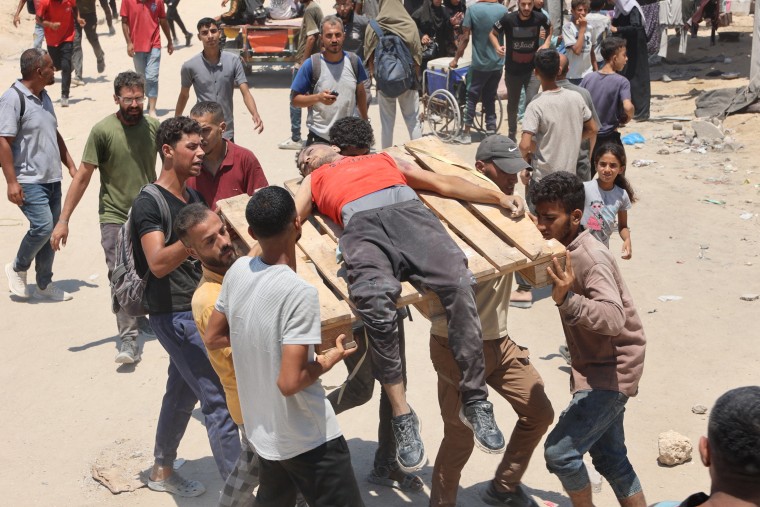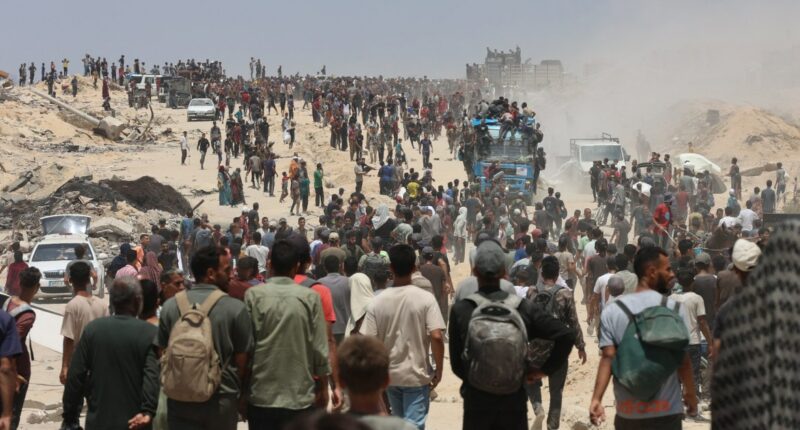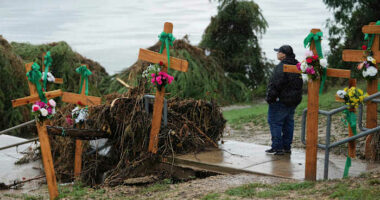Share this @internewscast.com
Aid organizations report that they aim to distribute assistance, but Israel complicates the process with delays and denials, altering schedules and routes, often at the last moment, making it challenging or impossible to safely collect the aid for distribution.
Half of the 138 requests the World Food Programme made in the last week to collect aid from holding sites were denied, the agency said Friday.
Even after receiving approval to load the aid, the WFP noted that “convoys are typically delayed” and can take up to 46 hours to get final approval to move along the strip.
Israel has consistently argued that these restrictions are necessary to prevent Hamas from seizing the food; however, an internal U.S. government analysis referenced by Reuters found no evidence of systematic theft of the supplies by Hamas over the past 20 months.
WFP on Friday said it had 300 trucks of aid waiting to be distributed inside Gaza, and UNRWA, the U.N.’s humanitarian agency for Palestinians, said it had about 6,000 aid trucks in Jordan and Egypt also waiting to be approved.
“Allow the U.N., including UNRWA & our partners to operate at scale & without bureaucratic or political hurdles,” Philippe Lazzarini, UNRWA’s commissioner-general, said Saturday in a post on X.
Lazzarini also slammed Israel for allowing aid airdrops by foreign countries, calling it a “distraction & screensmoke.” A previous effort to air drop aid in March last year proved insufficient to feed the population, as humanitarian agencies warned at the time.
Delayed convoys
Each delayed convoy means more and increasingly desperate people gathering along known aid delivery routes, waiting to intercept incoming trucks. This has led to people ambushing the aid trucks, which agencies say poses a danger to their workers.
“During these delays crowds of hungry people often anticipate the arrival of our trucks and gather along the expected transport routes which are too few,” the WFP said.

Israeli troops have fired at gathering crowds, and the number of people killed in these separate but regular incidents have totaled over 1,000, the United Nations Office for the Coordination of Humanitarian Affairs said Wednesday. Incidents near the distribution sites run by the U.S. and Israeli-backed Gaza Humanitarian Foundation have been particularly violent.
Um Saeed Al-Reefi had walked to a distribution site near Rafah on Thursday and spoke to NBC News’ team on the ground, still holding her empty bags.
“I just want to feed my daughter something. But they attacked us — pepper spray, bullets, gas. I couldn’t breathe. I ran for my life. I came back, as you see … empty-handed,” she said. NBC News has not independently verified her account of the attack.
On Friday, at least 16 people were killed northwest of Gaza City while waiting for aid, Dr. Khalil Al-Daqran, a spokesperson for Gaza’s Health Ministry, told NBC News.
“What is missing right now is safe, sustained access,” the U.N. Office for the Coordination of Humanitarian Affairs said Friday. “Workers face constant danger, crossings are unreliable, and critical items are routinely blocked,” it said.
Aid distribution in Gaza has not always been this deficient, or fatal.
Last year, when aid was being let in through the Rafah crossing along the Egyptian border, delivery, though sparse, was regular and U.N. agencies, primarily UNRWA, were able to distribute aid without widespread attacks or looting.
Gaza’s police force was also more present and provided security, but months of Israeli bombing have crippled the police and increased desperation among the public.












